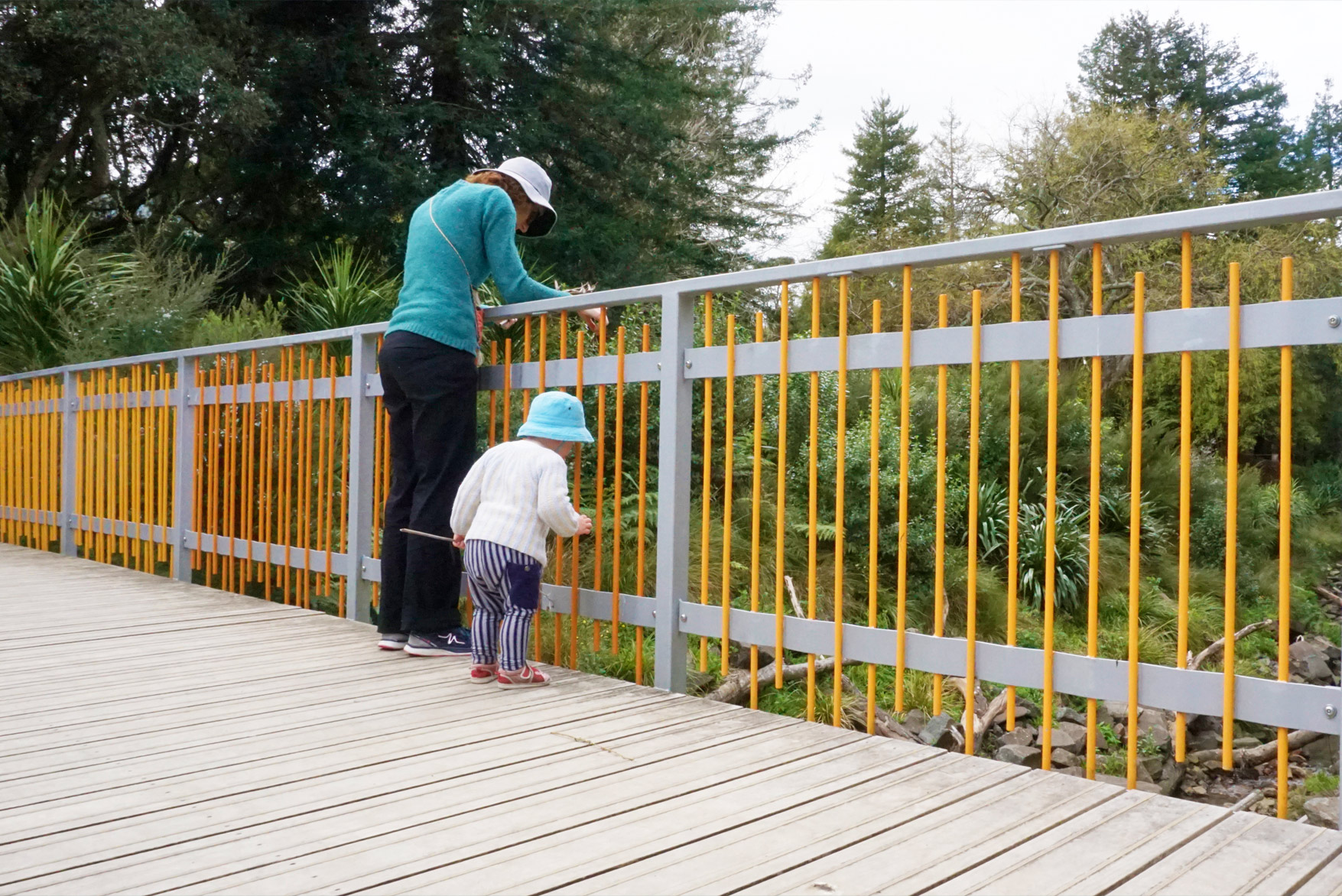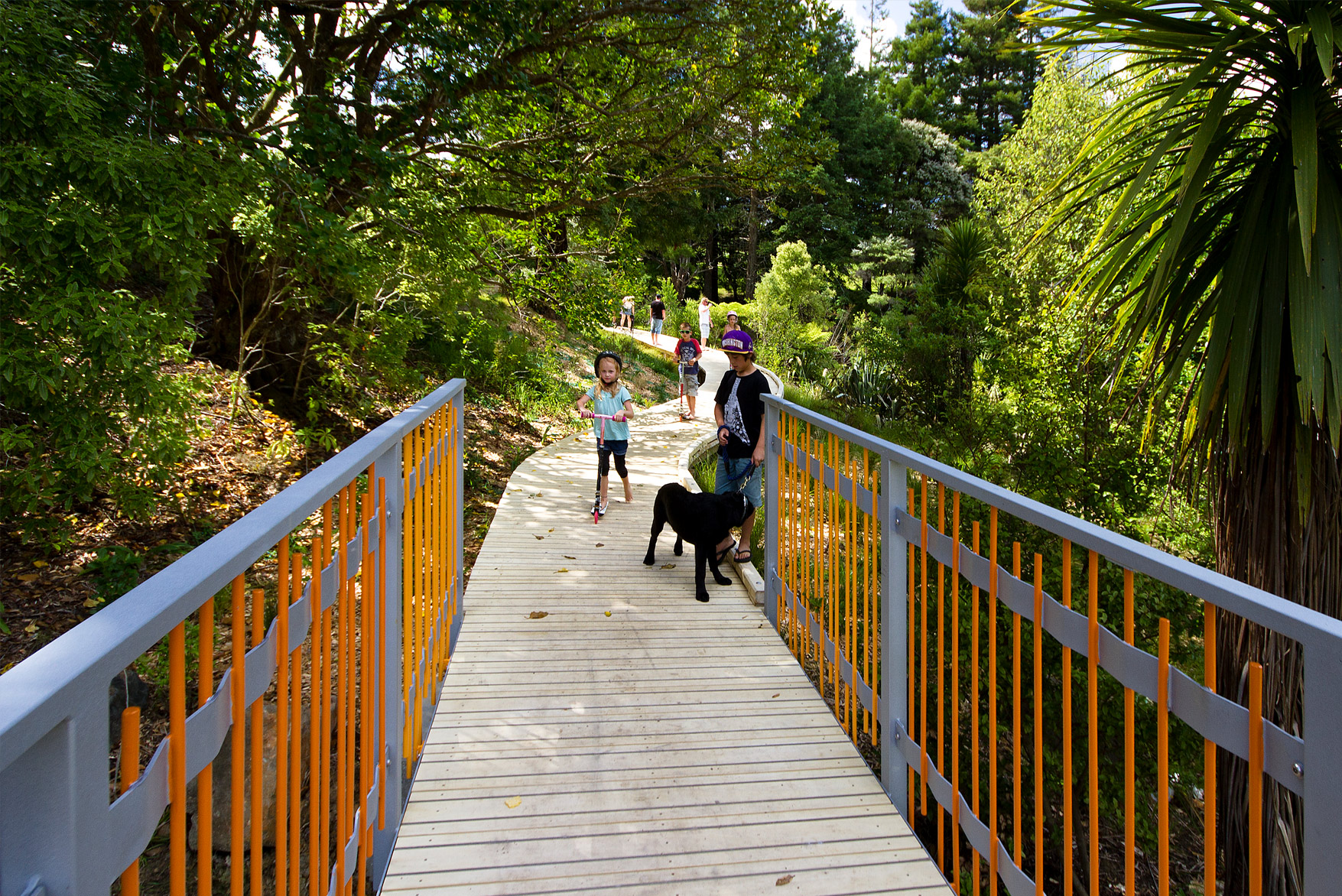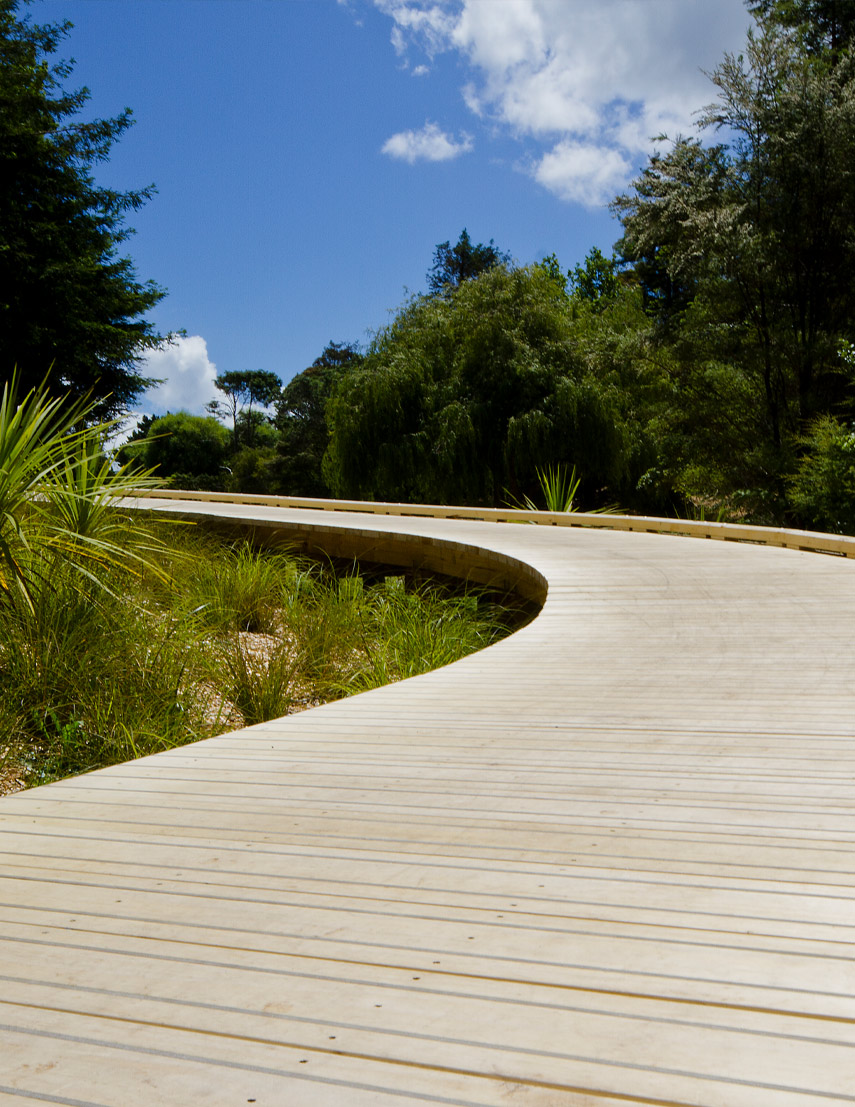Auckland’s first dedicated stream daylighting project
Stream day-lighting is the practice of bringing buried pipes to the surface and restoring natural streams in their place. Naturalised streams offer multiple benefits over pipes, including restored habitats, enhanced stormwater management, and a natural asset for the community to enjoy.
Following Boffa Miskell's 2006 work entitled ‘The Opportunities for Stream Daylighting in Auckland’ (an NZILA awarded project), Boffa Miskell and Morphum Environmental Ltd, approached the mayor’s office to form a stakeholder group to review feasibility of stream daylighting projects in the region.
In December 2010, the Mayor’s office chose La Rosa Reserve in Green Bay, West Auckland to be the flagship stream day-lighting project. Two tributaries of the Avondale Stream were daylighted from their culverts for a combined length of 200m. La Rosa showcased bioengineering techniques for stream restoration and illustrated how a community can be reconnected with their local stream.





